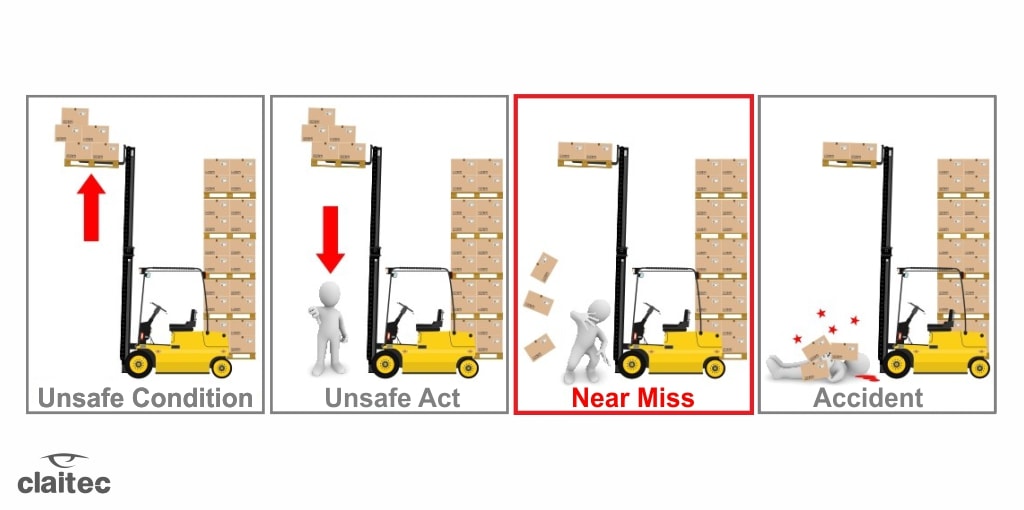It is often mistakenly believed that industrial work is inevitably associated with high accident risks at work. Without ignoring the nature of the work in industrial or manufacturing areas and without knowing the power or qualities of the machinery and the substances that are handled in those spaces, we can safely affirm that risk control is increasingly becoming more sophisticated. Every day we are better prepared to make our work space a safe area, where prevention prevails over the unforeseen.
In this context, today we want to discuss the concept of “Near Miss”.
This idea arises precisely from the observation of the work routine in industrial spaces. Very often, workers “almost” have an accident or “almost” suffer from some type of injury or fatality without the company even being aware of these potentially dangerous incidents. These situations are not recorded, nor are there any actions taken in response or to prevent them from happening again – Just a “very lucky, mate!” or a thanks to the universe for not having to endure a very serious misfortune.
However, it’s our responsibility to act as soon as we see any of these signs.
We must react when “potential accidents” situations start to occur because these “near misses” are, precisely, risk indicators. These “near misses” are warning lights forewarning us about the location of a potential accident.
That’s exactly what “Near Miss” is all about – registering “potentials” and acting swiftly.
Some of our clients are already applying a methodology of work based on the Near Miss scenario, and report very good results, as do other industries that have shown important international advances in this area. Even the US National Occupational Safety Council is working hard on this concept, stating that for every 300 “almost” work-related accidents, 1 ends up in a serious injury.
The same institution defines a “near-miss” as “an unplanned event that did not result in injury or damage but had the potential to cause them.” Therefore, we must encourage all employees to report on the risky situations that may have arisen in the industry, and train our area managers to pay special attention to those aspects. In addition, we must be professionals in recording, monitoring and acting against such events – the benefits we can expect from applying this system to our safety measures will be broad and of pivotal importance for all teams.
Applying the Near Miss system is certainly a way to listen to the risk signals that occur.
We encourage you to do so and we believe – as some of our customers are already confirming – that this method complements perfectly well with the systems already we develop and offer at Claitec: https://claitec.com/en/products/

